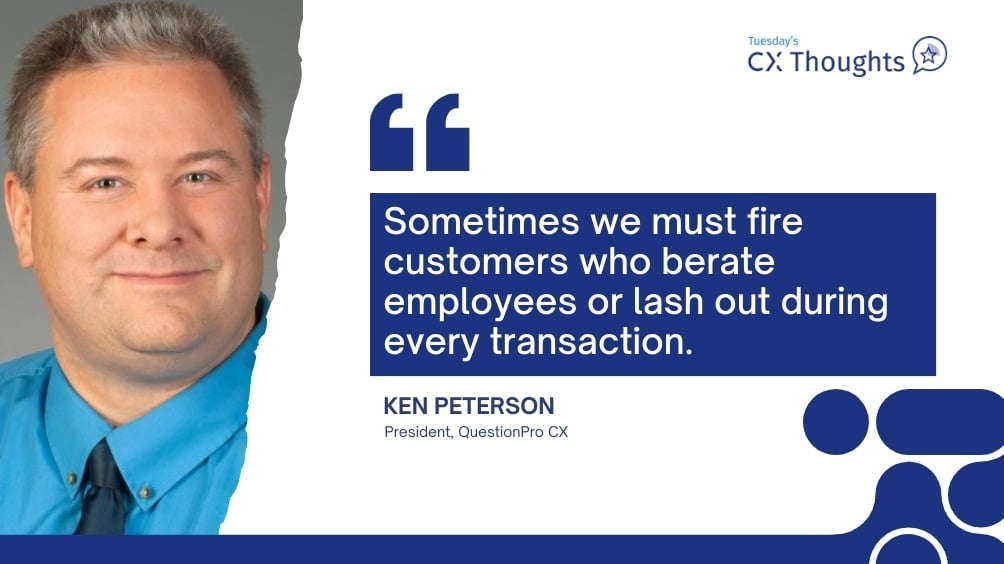
What do you remember about your high school?
The marks you scored, the class size, the area of the campus or do you remember the people: teachers, friends, and classmates.
Most of you have fond memories of your high school because of the personal relationships and the kind of engagement you had with all those people.
Customer service is just like that high school, where people remember you for the relationships and the level of customer engagement your service team provided.
When an automated customer service is geared to building relationships from one human to another, it’s at that point you are able to provide ‘Real’ value.
Sadly, only some of them are capable of providing a ‘human’ touch to their services. It’s no wonder, ‘Better human service’ has been the most requested improvement from customers.
Without any rapport, your service team cannot expect to have a genuine customer engagement. The lack of which will affect your customer experience, eventually hurting your conversions.
Here are a few ways to humanize your automated customer service to deliver a rich customer experience:
1. Understand the context
Automation does bring more efficiency to customer service tasks, especially the repetitive ones. It has helped companies save resources and concentrate on the important aspects of their service.
But, blindly automating without understanding the context of the situation can be dangerous. Your customer engagement becomes a bit of a drag since much of what you are saying has no relevance.
Automated services like sentiment analysis allow your service team to know what customers are saying about them.
With that said, sarcasm, wit, anger, fear might not be easy to track. Thus, it’s always a good idea to have a human supervision to understand the context of the situation. Thus, companies need to have a good balance on both automation and human intervention.
Customer service which fails to balance these two tends to rely heavily on its automation. An auto response sent without understanding the context can make your service team untrustworthy. It also makes customers feel that you don’t care. None of these helps you in building actual relationships.
Check out this example, do you think its customer service can be trusted, do you think they care about the customers?
2. Avoid the ‘Us vs. Them’ mentality
Service teams tend to rely more on their automation because of the ‘Us vs. Them’ mentality.
The pressures of achieving targets forces teams to use automation in order to increase efficiency. This makes the entire customer service engine seem like a ‘Hunting’ process.
The job is to look for the prey and attack it. This creates a rift between service teams and customers by making it an ‘Us’ vs. ‘Them’ approach.
All your customer engagement efforts appear to be a desperate attempts to build some rapport with customers.
To humanize your automated customer service, build the foundation of nurturing – adopt a ‘Farmer’ mentality.
Unlike a hunter, a farmer will plant seeds and nurture it for the longest time. Over time, they will reap the benefits of their efforts.
Similarly, service teams need to adopt a customer nurturing approach. Don’t be all over the place and project yourself as desperate. Instead, listen to customers and assist them at each stage of interaction. This allows for a rich customer engagement that eventually helps in fostering personal relationships.
3. Use insights to build relationships
Sending feedback survey is one of the popular automated activities carried out by customer service teams. But, when it comes to using the feedback insights, there is a sense of fatigue. On average, half of the industry does not implement customer feedback insights.
On the other hand, the companies who act upon these insights, 70% of them provide exceptional customer experience automation. When a customer sees that you have actually implemented their feedback, it makes them feel good. This encourages customers to continue doing business with you.
When there is a desire from the customer’s side to engage with your service team, there lies an opportunity to build a strong meaningful relationship.
But to make sure the changes that you apply are bearing desirable results, keep measuring customer satisfaction. This helps you stay on the right track of providing high-quality customer engagement, at the same time, reducing churn rates.
4. Hire EQ
When it comes to humanizing your customer service, nothing can match the power of empathy map. The key to providing empathetic customer services is through hiring a team with high emotional intelligence (EQ).
When customer service is run by emotionally intelligent individuals and powerful automation platforms, building genuine relationships becomes a smoother process.
Say, you run an e-commerce company and in order to understand the customer, you automate a segmentation analysis. By breaking down customer base into smaller groups, you can initiate conversations.
But if you want to take it the whole nine yards, you need to put yourself in customer’s shoes. Understand what each customer wants from you, be responsive to their needs and emotions. By being relatable, you can enable relevant customer engagement.
Emotionally intelligent people are able to build relationships even in sticky situations. High EQ individuals are self-aware and thus have more control over their emotions. This helps them to avoid acting erratically and take charge of the situation.
When angry customers feel like they are talking to a person of authority, someone who could give concrete solutions, much of their fears and insecurity dies.
Here is an example of Jet Blue, an American airline company, which used a mix of high emotional intelligence and a powerful automation software. The response was fast and the message was personal.


5. Use Artificial intelligence
How well you use your AI with your automation is going to determine the extent to which you can humanize your customer service.
Smart businesses are looking at using AI to create a rich omnichannel experience. It’s a given, your customer service should be accessible from every channel possible, but the quality of experience is where the opportunity/challenge lies. A customer’s appreciation is based on how responsive you are to their needs, the channel doesn’t matter.
The application of ‘Bots’ to the customer service engine has enabled rich quality customer engagement between multiple channels.
The idea of bots came in when basic automation platforms were finding it difficult to create a meaningful dialogue along different channels. Whether it’s live chat, conversational forms, image recognition – each one of them have made it easier to build stronger relationships with customers.
Learn About: Customer Intelligence
Winding up
Humanizing your automated customer service is not an overnight process, it takes a lot of time and hard work. But once you are able to establish a relationship, your customer service can reap benefits for a long time.
Always remember, never make your customer service engine fully reliant on automation or people. Automation cannot express customer empathy and people can be unpredictable. Both of which can affect your customer engagement negatively.
That’s why your customer service should aim at enhancing customer satisfaction around the experience through the right balance of human presence and machine learning.








